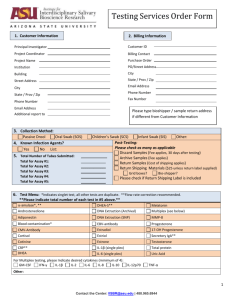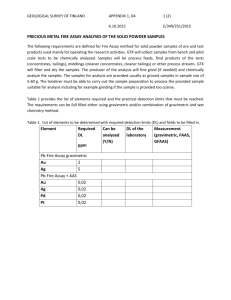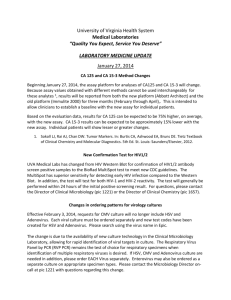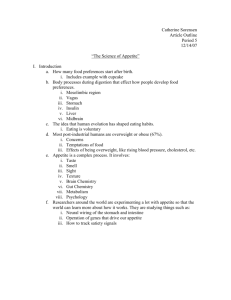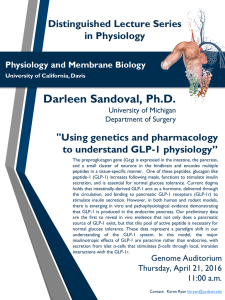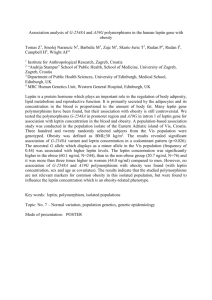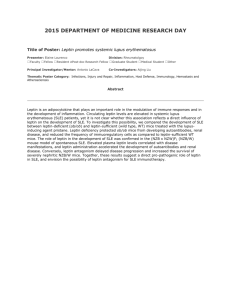Supplementary Information (docx 18K)
advertisement
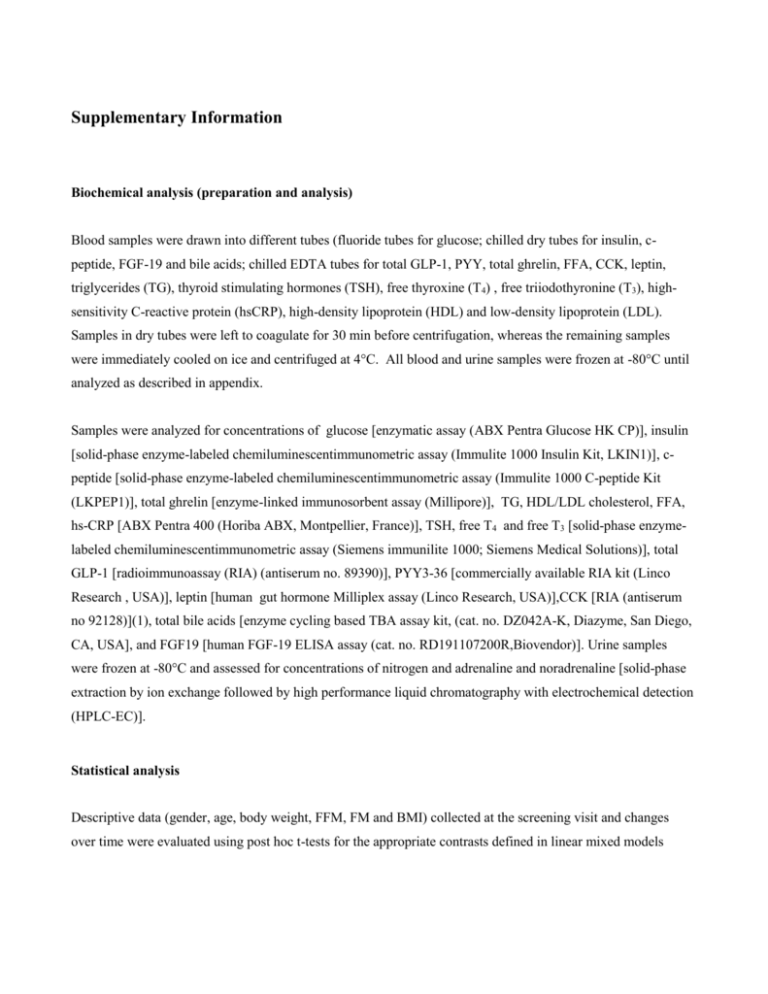
Supplementary Information Biochemical analysis (preparation and analysis) Blood samples were drawn into different tubes (fluoride tubes for glucose; chilled dry tubes for insulin, cpeptide, FGF-19 and bile acids; chilled EDTA tubes for total GLP-1, PYY, total ghrelin, FFA, CCK, leptin, triglycerides (TG), thyroid stimulating hormones (TSH), free thyroxine (T 4) , free triiodothyronine (T3), highsensitivity C-reactive protein (hsCRP), high-density lipoprotein (HDL) and low-density lipoprotein (LDL). Samples in dry tubes were left to coagulate for 30 min before centrifugation, whereas the remaining samples were immediately cooled on ice and centrifuged at 4°C. All blood and urine samples were frozen at -80°C until analyzed as described in appendix. Samples were analyzed for concentrations of glucose [enzymatic assay (ABX Pentra Glucose HK CP)], insulin [solid-phase enzyme-labeled chemiluminescentimmunometric assay (Immulite 1000 Insulin Kit, LKIN1)], cpeptide [solid-phase enzyme-labeled chemiluminescentimmunometric assay (Immulite 1000 C-peptide Kit (LKPEP1)], total ghrelin [enzyme-linked immunosorbent assay (Millipore)], TG, HDL/LDL cholesterol, FFA, hs-CRP [ABX Pentra 400 (Horiba ABX, Montpellier, France)], TSH, free T4 and free T3 [solid-phase enzymelabeled chemiluminescentimmunometric assay (Siemens immunilite 1000; Siemens Medical Solutions)], total GLP-1 [radioimmunoassay (RIA) (antiserum no. 89390)], PYY3-36 [commercially available RIA kit (Linco Research , USA)], leptin [human gut hormone Milliplex assay (Linco Research, USA)],CCK [RIA (antiserum no 92128)](1), total bile acids [enzyme cycling based TBA assay kit, (cat. no. DZ042A-K, Diazyme, San Diego, CA, USA], and FGF19 [human FGF-19 ELISA assay (cat. no. RD191107200R,Biovendor)]. Urine samples were frozen at -80°C and assessed for concentrations of nitrogen and adrenaline and noradrenaline [solid-phase extraction by ion exchange followed by high performance liquid chromatography with electrochemical detection (HPLC-EC)]. Statistical analysis Descriptive data (gender, age, body weight, FFM, FM and BMI) collected at the screening visit and changes over time were evaluated using post hoc t-tests for the appropriate contrasts defined in linear mixed models including the group-time interaction as a fixed effect and participants as random. Data were summarized as mean ± standard deviation (SD). Primary and secondary endpoints, EE and appetite, respectively, and all biochemical measures, were analyzed by means of linear mixed models. Baseline values (week 7) were included in the model to account for potential differences present already before the intervention. Analysis of EE additionally included a number of covariates as fixed effects to adjust for differences in body composition and spontaneous physical activity. Likewise, leptin was analyzed in a model adjusted for FM. Results were reported as estimated means with corresponding 95% confidence intervals (CI). The postprandial outcomes were analyzed by a repeated measurement model including the group-time interaction as a fixed effect and participants as random effects. In addition, a spatial Gaussian serial correlation structure was included to describe serial correlation between repeated measurements on the same subject, ensuring that measurements close in time were more correlated than measurements taken far apart. Time was measured as weeks elapsed since baseline and within a study week (on the test day) as minutes elapsed after ingesting a test meal. Postprandial measures were reported as model-based AUC estimates with 95% CI. Area under the curve (AUC) was calculated in R version 2.15.0 as total area (tAUC) using the trapezoidal rule. All models used were validated using residual plots and normal probability (QQ) plots. Likelihood ratio tests were used to evaluate the group effect. If a difference between RYGB and CON was found in the repeated measurement model, each time point was compared by model based post hoc analysis. To explore if post-surgical effects could be explained by alterations in hormonal responses we considered exploratory analyses where additional explanatory variables were included in the models. Hence GLP-1, PYY3-36 and bile acids were included to explain potentially positive effects of RYGB on EE, whereas EE and leptin were included if negative effects of RYGB were found. Likewise, we investigated if appetite-regulating hormones GLP-1, PYY3-36, CCK, leptin, ghrelin explained effects seen in appetite. Only participants who attended the baseline visit were included in the analysis. P-values <0.05 were considered significant. Figures were based on raw data, unless otherwise stated, whereas conclusions were based on the fitted model.

